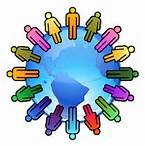Tick-tock...it’s the Population Clock. This is fun, you can see each hour the population clock tick over with real population data. On 9 July 2013 at 05:24:38 PM (Canberra time), the resident population of Australia is projected to be: 23,110,108
Check it out:
http://www.abs.gov.au/ausstats/abs@.nsf/web+pages/population+clock?opendocument
Another fab thing is the Animated Population Pyramid. This shows a cool graph of male and female populations by age group. You can click on the ‘view surplus’ button to see surpluses of ladies or gentlemen, by age, by state, so if you’re looking for a partner, perhaps start your research here!
There is a button you can click that animates the graph; you can see the population by gender from 1971 – 1956. It’s interesting to watch the shape of the graph change as you move through the years. This is a good tool to check out when thinking about population demand for housing.
http://www.abs.gov.au/websitedbs/d3310114.nsf/home/Population%20Pyramid%20-%20Australia
What I actually went to the ABS website for, before being distracted by clocks and animated graphs was to check out the latest population growth data for the Hunter Region of NSW.
You see the ABS recently released their small area population estimates for the year ended June 2012. This is the first insight into population change at smaller areas of geography since the 2011 Census. Here are my key findings:
STATE SUMMARY
At June 2012, the estimated resident population of New South Wales (NSW) was 7.29 million people. Between 2011 and 2012, the NSW population increased by 78,900 people (or 1.1%). This was the third largest growth of all states and territories, behind Victoria and Queensland.
POPULATION CHANGE IN THE REMAINDER OF NSW
At June 2012, just over one-third of NSW residents lived outside Greater Sydney and this increased by 17,600 people in the year to 2012, to reach 2.62 million.
The Hunter Valley (excluding Newcastle) had the largest and fastest population increase in the remainder of NSW (up 4,500 people or 1.8%) in 2011-12. The next largest increase was in adjacent Newcastle and Lake Macquarie (up 3,100 people), followed by Central West (2,100) and Capital Region (1,600). The only area to decline was Coffs Harbour - Grafton on the mid-north coast, down 90 people.
Maitland – West had the fifth largest growth after four Sydney areas. Thank you, we’ve been developing here for some time.
Large growth was recorded near the Australian Capital Territory, in the Hunter Valley and in the Central West.
http://www.abs.gov.au/ausstats/abs@.nsf/web+pages/population+clock?opendocument
The ABS is full of important information, at a click of a key I found some industry data for one town Property Bloom works in. It was interesting to see the breakdown by industry by employment. The top employer in this town was Manufacturing, closely followed by Retail. Now if I asked someone on the street, they may have said Tourism as number one and Mining close behind. So what sometimes seems obvious is not always the reality.
It’s important to take a ‘big picture’ look at the areas you invest in. That’s what Property Bloom does; we research populations, vacancy, median sales price, and long term sales data and combine it with what we hear on the street and from talking to our agents. From this, we work out the best locations for our client’s developments.
Whilst it may not seem immediately relative, if you cross check the statistical data with qualitative research i.e. what you find going on in the market, it all makes for some good, solid backing to why you should be investing in that location.


